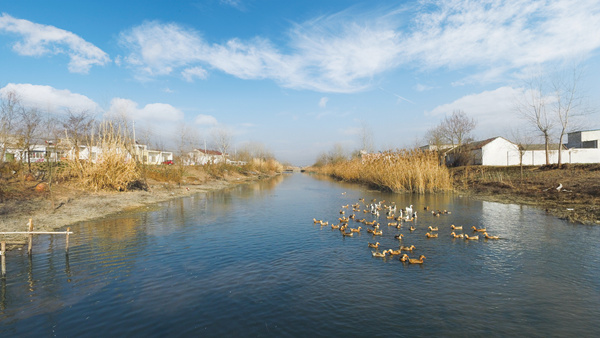

The canal, the construction of which peaked during the Sui (581-618) and Yuan (1271-1368) dynasties, connects several key rivers across the country, including the Yangtze, Huaihe and Yellow rivers.
In AD 605, Emperor Yang of the Sui Dynasty employed a massive labor force to dig the canal, linking the ancient capital of Luoyang in Henan province to Suzhou via the Yellow River and Huaihe River.
The Grand Canal once ran 180 km through Anhui, but most of it has since dried up due to both natural and human factors, and only Sixian has preserved 28 km of the once-majestic waterway.
The flowing water, ditches, embankment and wild ducks make for a picturesque view of the historic cultural corridor. Perhaps what is more surprising is that the ancient Grand Canal section still plays a positive role in local irrigation, flood diversion and tourism.
Water from the Yellow River carried a great deal of silt, which could easily block up certain sections of the Grand Canal, Zhang explains.
After the ancient capital moved to Beijing during the rule of Emperor Shizu (Kublai Khan) of the Yuan Dynasty, parts of the Grand Canal that were built during the Sui and Tang (618-907) dynasties fell into disuse.